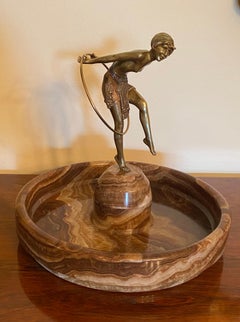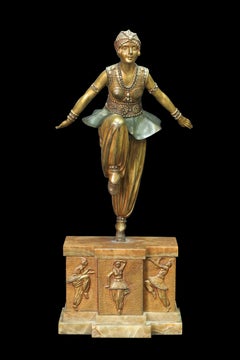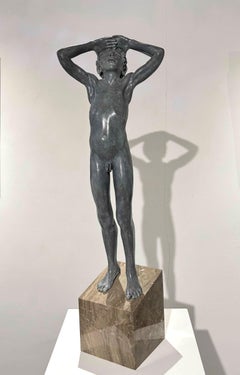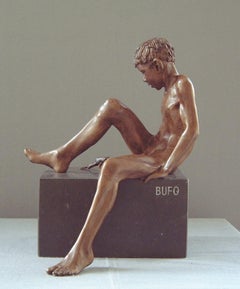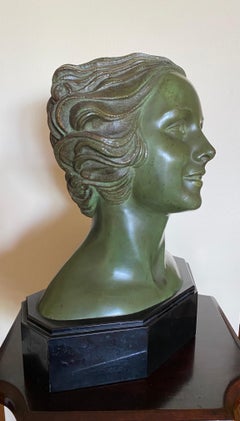Demetre Chiparus Art
Romanian sculptor Demetre Chiparus — who is sometimes referred to as Dumitru Chiparus or Dimitri Chiparus — was a renowned Art Deco-era artist most often associated with realism. He initially created sculptures that featured small children. As his work began to mature, he continued to create figurative sculptures but shifted his focus, and his output was marked by an appreciation for the lithe female form — a popular subject during the 1920s. Chiparus was later known for his animal sculptures, too.
Chiparus lived comfortably as an artist owing in part to his family fortune. At the age of 23, he moved to Italy and began his formal art and sculpting studies under Italian sculptor Raffaello Romanelli. Following his time in Italy, he moved to Paris where he attended L'École des Beaux-Arts. He studied under sculptors Antonin Mercie and Jean Boucher. He was inspired by the Russian Ballet, French theater and early motion pictures.
Though he wouldn’t sell many of his pieces during his lifetime, Chiparus was well known for his bright and colorful busts and sculptures featuring dancing ladies. He was equally inspired by the discovery of King Tut’s tomb — a common influence for designers and artists of the Art Deco era — which is obvious in his references to Egyptian themes in his decorative objects and other realist works.
Chiparus worked with a combination of ivory and bronze to create chryselephantine sculptures, a method and type of sculpture that was particularly popular during the Archaic period. The bases of his pieces were typically made of marble or onyx and he adorned his life-like subjects with vibrant enamel that lent a touch of whimsicality to his art.
Chiparus exhibited his works at the Salon of 1914 and lived in Paris until his death. A range of his sculptures is held in the permanent collection of the Museo Art Nouveau and Art Deco in Spain.
Find original Demetre Chiparus decorative objects, sculptures and other works on 1stDibs.
1920s Art Deco Demetre Chiparus Art
Marble, Bronze
1920s Art Deco Demetre Chiparus Art
Bronze
21st Century and Contemporary Contemporary Demetre Chiparus Art
Marble, Bronze
21st Century and Contemporary Contemporary Demetre Chiparus Art
Marble, Bronze
1930s Art Deco Demetre Chiparus Art
Bronze
21st Century and Contemporary Contemporary Demetre Chiparus Art
Marble, Bronze
21st Century and Contemporary Contemporary Demetre Chiparus Art
Marble, Bronze
21st Century and Contemporary Contemporary Demetre Chiparus Art
Marble, Bronze
1920s Art Deco Demetre Chiparus Art
Marble, Bronze
21st Century and Contemporary Contemporary Demetre Chiparus Art
Marble, Bronze
1920s Art Deco Demetre Chiparus Art
Bronze
20th Century Other Art Style Demetre Chiparus Art
Marble, Bronze
21st Century and Contemporary Contemporary Demetre Chiparus Art
Marble, Bronze
1970s Art Deco Demetre Chiparus Art
Bronze
1930s Art Deco Demetre Chiparus Art
Bronze
Early 20th Century Art Deco Demetre Chiparus Art
Marble, Bronze
1920s Art Deco Demetre Chiparus Art
Bronze
1920s Art Deco Demetre Chiparus Art
Clay
1930s Art Deco Demetre Chiparus Art
Bronze
